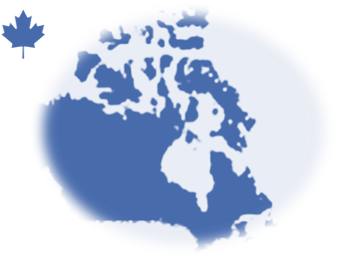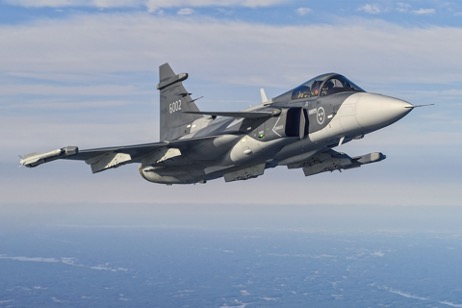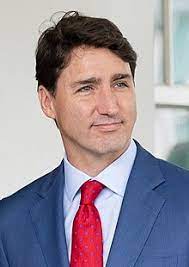Sovereignty
True Sovereignty for Canada will require both independence and the correct Alliances. Independence would require Canada to be truly independent of foreign influence including and maybe, specifically U.S. influence. It would require that Canada’s governing bodies recognize and reject Canada’s tradition of bending to the influence of the U.S. and the myth that Canada’s reliance on the U.S. military is beneficial to Canada’s security. As clarified by General Pierre St-Amand, deputy commander of Colorado-based NORAD. Defence of Canada is not even an objective of NORAD or of the U.S. Unless, as the threat below,, clearly conveys, Canada bends to the U.S. demand that we install U.S. made nuclear anti-missile defence systems in Canada.
In the fall of 1958, Prime Minister John Diefenbaker announced that as part of Canada’s responsibilities in NORAD, his government would purchase 56 nuclear weapons carrying CIM-10B Bomarc missiles. They would be deployed near La Macaza, Quebec, and North Bay, Ontario. Both sites would include custom-built storage and launch facilities and quarters for US personnel. The missiles would replace the cancelled Avro Arrow that the U.S efforts had convinced the Canadian government were obsolete for Soviet Bomber defence.
The missiles and their nuclear arms were removed from Canada by 1972

Avro Arrow
Max speed : 1,524 mph – Mach 2+
Range 820 Miles
While the Arrow could intercept Enemy Bombers and use the human eye to evaluate risk, the Bomark missile could only destroy them. Once launched, whether at an enemy aircraft or a civilian airliner that inadvertently strayed off course, the missile would destroy its target. But the U.S. military convinced the Canadian government that interceptor aircraft were obsolete and that missiles were the future. Luckily, after the cancellation of the Arrow, the U.S., suddenly deciding that interceptor aircraft were actually needed and sold Canada the F101 Voodoo fighter which couldn’t out perform the arrow
F101Voodoo
Max speed 1000 mph
Range 1500 miles w/2 massive drop tanks

Bomark Missile
Max speed Mach 2.5
Range 400 miles, – almost guaranteeing that nuclear explosions caused by missile intercepts, would occur over Canada
But nuclear weapons were never accepted in Canada . In January 1963, NATO’s Supreme Allied Commander General Lauris Norstad, said in a press conference in Ottawa that “because Canada was not deploying nuclear weapons to its troops in Germany, nor equipping Bomarc missiles at home with nuclear warheads, it was failing in its obligations to its allies” (read- The U.S.). In 1968 the new Trudeau government announced that Canadian forces would no longer accept U.S. nuclear weaponry, and all American nuclear weapons stationed in Canada, including those specific to the Bomarc missiles, were returned to the US by 1972. The Bomarc missiles, recommended by the U.S., were decommissioned and used as target drones by the US Air Force. Today’s American demand for Missile defence systems are a carbon copy of that Bomark fraud. Anti-missile defence systems in Canada will still create nuclear explosions over Canada. Making Canada the killing ground for the defence of the U.S.A.
NORAD
The U.S. and Canada’s supposed cooperative defence of North America is, at best, a fiction perpetuated by the U.S. to ensure Canada’s reliance on the U.S. for weapon systems or a further attempt to make Canada a killing ground for U.S. forward defence. The early warning sites of the NORAD defence systems are all designed to ensure that attacking missiles would be detected and attacked while over Canada,,which means that the nuclear explosions that occur in the defence of the U.S. will occur over Canada. The aftermath of a failed nuclear attack on the U.S. would leave the U.S. unscathed, while leaving much or the north and near-north of Canada uninhabitable for thousands of years. That the U.S. has any real intent to protect Canada in any way is a fiction started, when the U.S. sabotaged Canada’s Avro Arrow program and then proceeded to scoop up all of our best engineering talent for U.S. aeronautics companies and then sold us an inferior system of missiles and aircraft .
The first flight of the Arrow should have been a crowning moment for the Canadian aerospace industry. Yet the plane was scrapped by the federal government just a few months later. A decision that remains controversial to this day.
U.S. interference behind the scenes and decisions by the C.I.A. has been suspected to have influenced Canada’s government’s decision to scrap the Avro Arrow. Since that day, when Canada was manipulated into giving up its military aviation industry, Canada has been tied to our big brother to the south. Every fighter aircraft that Canada has purchased, and most other aircraft, since the Arrow, have been purchased from the U.S. Including Canada’s latest purchase, the F35.
The F35
Canada will buy F35 aircraft, we will fly them and maintain them, but we will not actually own them. Data collected by the aircraft’s sensors during missions are automatically relayed to Lockheed Martin (the plane’s manufacturer),including, a host of national security secrets, records of the plane’s flight path and mission profile, communications data, video imagery, electronic signatures and locations of friendly and opposing radars and other emitters, and potential details about a country’s tactics, techniques, and procedures. There are supposedly changes being planned that will allow nations to block this transfer, If you really want to trust the U.S. government and /or the CIA.
Allies
Canada is a non-nuclear middle power and as such should develop strong relationships with countries with similar strategic and national objectives. Australia, New Zealand, Norway, Sweden, and France come to mind
Australia
Defence’s primary roles for Australia are to protect and advance Australia’s strategic interests through the promotion of security and stability, provide military capabilities to defend Australia and its national interests, and support the Australian community and civilian authorities as directed by the Government. Defence is also focused on building a more potent, capable and agile future force to better meet and respond to future challenges.
Norway
Norway’s Strategic priorities areDeterring Russia in the High North, in increasingly close cooperation with the allies, is thus a key task for the Norwegian Armed Forces. Oslo is gradually lifting Cold War restrictions in the defence sphere and intensifying military cooperation with NATO
Sweden
Sweden’s total defence must be designed and dimensioned to be able to respond to an armed attack against Sweden, including acts of war on Swedish territory. Sweden’s total defence is a war-deterrent by virtue of its strength, composition, command, preparedness and resilience.
France
Maintain full freedom of assessment on the part of French political
authorities:
- This will result from the priority given in the White Paper to
intelligence and to certain defence capabilities which reinforce
our strategic autonomy (deterrence, cruise missiles, early
warning). - Full participation of France in NATO does not entail automatic
contribution on the part of our nation to NATO military
interventions (decisions in the Alliance are made by
consensus) - Freedom to commit our armed forces:
- in particular no French armed forces will be permanently placed under NATO command in peace time.
Recommendation #1
Cancel Negotiations for the F35 and purchase the Swedish Gripen Fighter. A Plane to be built in Canada with technological data and information kept in Canada. And then further develop the Gripen’s Technologies within Canada with Canadian technology
Recommendation#2
Canada should withdraw from NORAD and seek to develop a home grown defence plan owned by Canada and including defence of our northern coasts. Cease all integrated postings with the U.S. military ,take control of the northern radar line and develop our own defence policy and strategy
Canadian Independence
Canada has already forfeited its defence sovereignty to the U.S. The U.S. uses the Canadian Arctic and the North West Passage like it is its own territory and uses Canada within NORAD as the killing ground for the protection of the U.S. Canada is a partner when it suits the U.S. Such as when there is interest by a large American corporation in selling Canada error prone military jets, while using their biased court system to try to destroy our commercial aircraft industry.,dairy industry, aluminum industry, softwood industry, steel industry, etc. etc. We are friends when it suits the U.S. and a security risk if that plays better in U.S. politics. Interconnectivity with the U.S. military is always an argument for Canada to buy American. Our senior military officers all serve with the U.S. military, and always under U.S. command. Is this partnership, brainwashing or simply away to control and influence our government leaders?
Recommendation #3
Canada should align our defence policy with like minded allies
- Focus on the high north
- Defend Canada and its national interests,
- Maintain the ability to respond to an armed attack
- Declare that no Canadian armed forces will be permanently placed under NATO command in peace time.
- Participation of Canada in NATO ensures automatic contribution on the part of our nation to NATO article 5 military intervention.
Security
Canada must take responsibility and control of our own Defence. Canada is not a major power in the world, and we don’t have to be. But we do have threats. We have the threat from the north, of Russia attacking through Canada as a route to attack the U.S. This has been a long standing threat and a well understood one. but since the advent of Trump and the new MAGA-Republicans we also have a potential threat from the south. We have the threat of an attack on Canada by a future undemocratic U.S. . Frequent threats during the Trump presidency have created a national threat not considered for over a century, but one that for the foreseeable future must be kept in mind. This new threat to Canada requires defence of our north from U.S. incursion as well as from the south. And, since Canada stands no chance of defending itself against a full military attack by the U.S., we require early tripwires and a planned potential asymmetric warfare defence strategies. The Trumpian threat of course can change over time, however it will take decades and multiple U.S. elections for the risk to subside. Unlike Ukraine, Canada may have no friends powerful enough to help us in the event of a U.S. attack. However, given the current burgeoning Neo-Nazi MAGA-Republican party, A U.S. invasion of Canada cannot be discounted. Canada’s extensive Water reserves, electrical power, oil, and minerals, are all potential targets for expansionist U.S. desires. In the current world, unfortunately American conquest of Canada would, be as stated by president Thomas Jefferson, and so many other Republican officials of his time:” a mere matter of marching; Keeping Canada however may, unlike other invasions by the U.S., cause the complete destruction of the U.S. itself.
Defence of The North
Defence of Canadas’ north requires that the northern radar defence line remain in place and that it be supplemented by new Canadian surveillance technologies, rapid air defence coverage, satellite and drone surveillance and under-ice capable submarines.
Coastal defence
Coastal security requires warships, but the need is coastal defence and does not necessarily require a blue water navy. Canada currently has a plan for 15, $2 billion dollar warships designed primarily for a blue water navy, Specifically to provide protection for U.S. or British Aircraft carrier battle groups This plan is far too expensive, continues with the erroneous belief that Canada can only defend itself with U.S. help and does not address Canada’s defence. For the cost of the current navy ship plan, Canada could purchase far more 110 meter fully combat ready Corvette sized ships capable of protecting Canada’s coasts and have money to spare for both ice capable warships and under ice capable AIP (Air Independent Propulsion) submarines
Submarines
During the Cold War, the Canadian Government realised their strategic vulnerabilities in the Arctic. If left unprotected, the Soviet navy’s submarine programme was capable of threatening Canada, NATO, and invaluable merchant shipping in the Pacific and Atlantic oceans via Canadian Arctic under-ice sea channels. The 1987 Defence Policy, Challenge and
Commitment, stated “… the Canadian navy must be able to determine what is happening under
the ice in the Canadian Arctic, and to deter hostile or potentially hostile intrusions.” LCdr Iain Meredith – CANADIAN FORCES COLLEGE – COLLÈGE DES FORCES CANADIENNES
JCSP 44 – PCEMI 44
2017 – 2018
Soryu (AID) Submarine

In contrast all other AIP submarines, the Japanese SORYU Class is a much larger submarine, displacing 4100 tonnes submerged and designed for long range patrols in
the distant waters from Japan.36 There is limited open source technical specifications on the
SORYU Class from reliable sources, however, one source does openly estimate that the range of
the SORYU while on AIP is 6100 nautical miles at 6.5 knots.37 If accurate, the SORYU could remain submerged for ~40 days. While the source cannot be verified, the range and speed under AIP would be consistent with a submarine of that size and propulsion plant. Before these specifications can be used in any decision making brief, further research and study on the hull form and fuel/LOX storage capacity is required to verify the information. Given its potential capabilities it is probable that the Stirling engine AIP system would meet the RCN’s
requirements for Arctic under-ice operations. LCdr Iain Meredith – CANADIAN FORCES COLLEGE – COLLÈGE DES FORCES CANADIENNES
JCSP 44 – PCEMI 44
2017 – 2018

Type 26 Frigates
Published purposes are Area Air Defence and Command and Control. Two functions necessary to protect U.S. Aircraft Carrier battle groups

Built to protect Canada’s coasts and provide NATO and UN patrol duties
Land based defence
Lessons from Ukraine would suggest that Canadian land forces should be heavily based on light missile defence in both anti-tank and anti-aircraft types. Canada should also invest in large numbers of small, robotic, defensive, autonomous weapons and drones
Prosperity
Trade
Canada must pivot our Trade to direct our efforts East and West rather than South. Pipelines directed at Asia and Europe are just a beginning. Container, bulk and LNG (liquified Natural Gas) ports on the East, West and Hudson’s Bay coasts with effective rail and road accesses are needed. Technologies would need to be developed for effective construction and innovative designs, in permafrost areas and modular battery or Nuclear power systems would need to be developed and made common place
Implementation of the Mid-North development plan and a meaningful northern development strategy meant to develop every arctic community to the level of a typical town located south of Lake Huron




